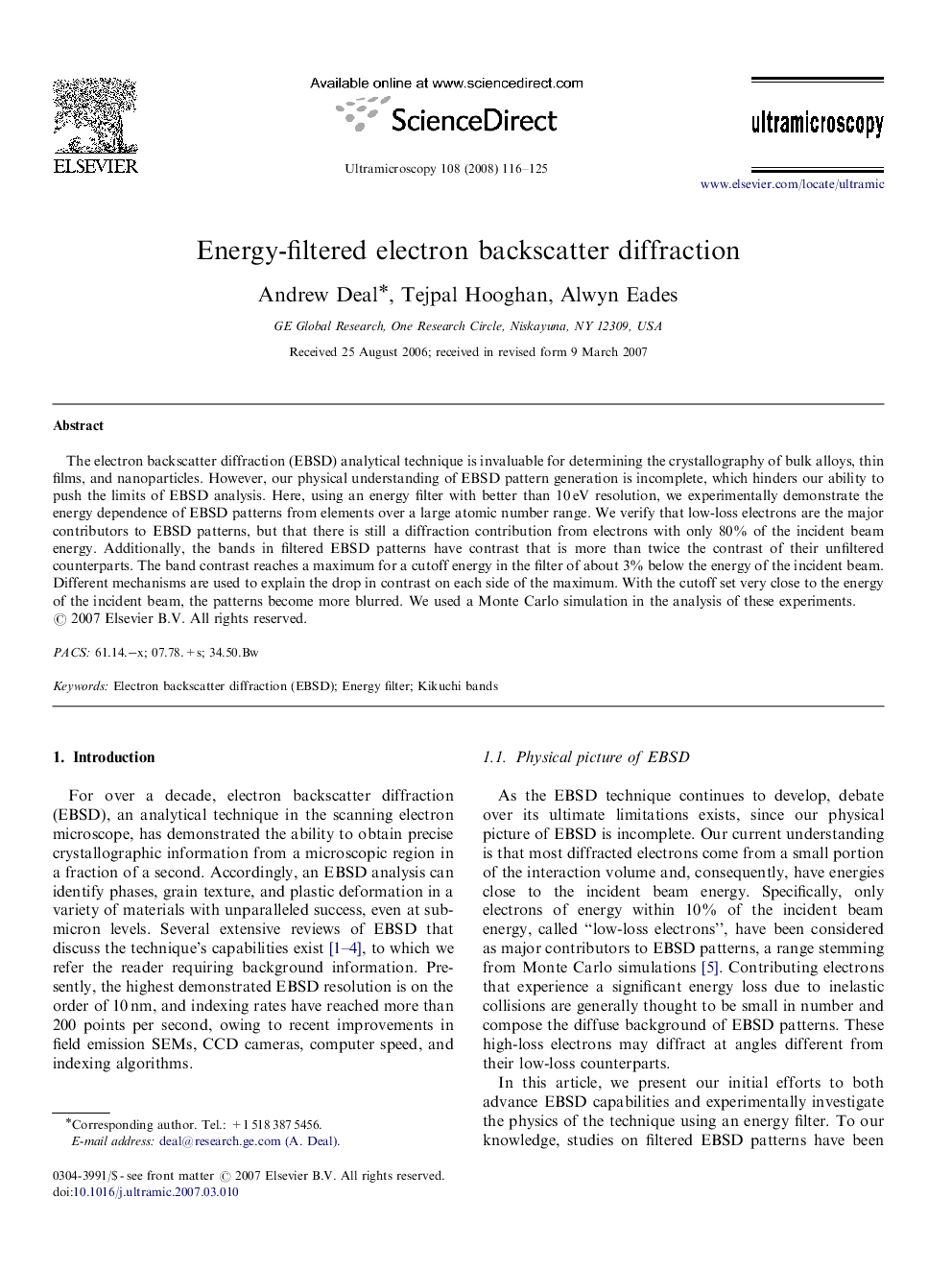| Article ID | Journal | Published Year | Pages | File Type |
|---|---|---|---|---|
| 1678538 | Ultramicroscopy | 2008 | 10 Pages |
The electron backscatter diffraction (EBSD) analytical technique is invaluable for determining the crystallography of bulk alloys, thin films, and nanoparticles. However, our physical understanding of EBSD pattern generation is incomplete, which hinders our ability to push the limits of EBSD analysis. Here, using an energy filter with better than 10 eV resolution, we experimentally demonstrate the energy dependence of EBSD patterns from elements over a large atomic number range. We verify that low-loss electrons are the major contributors to EBSD patterns, but that there is still a diffraction contribution from electrons with only 80% of the incident beam energy. Additionally, the bands in filtered EBSD patterns have contrast that is more than twice the contrast of their unfiltered counterparts. The band contrast reaches a maximum for a cutoff energy in the filter of about 3% below the energy of the incident beam. Different mechanisms are used to explain the drop in contrast on each side of the maximum. With the cutoff set very close to the energy of the incident beam, the patterns become more blurred. We used a Monte Carlo simulation in the analysis of these experiments.
